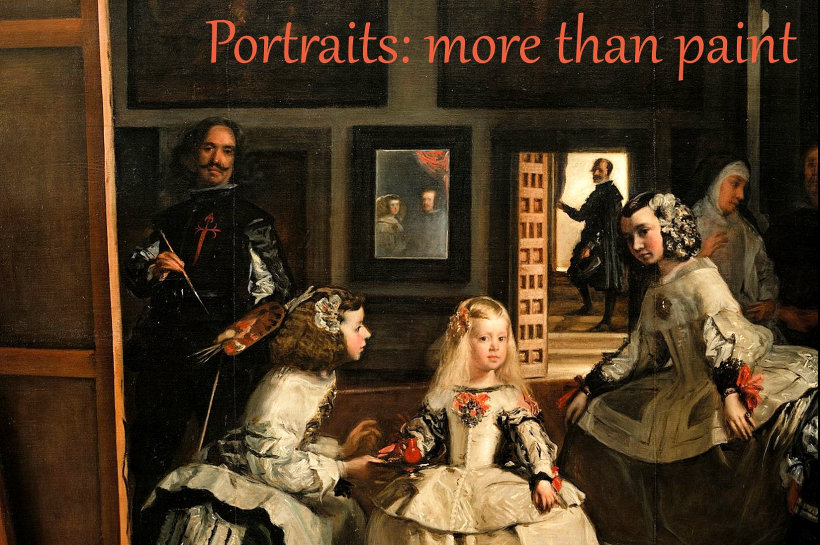2. Her Royal Majesty.
By focusing entirely on British queens in this class, we address two separate areas of concern. One is how the artist
may balance the depiction of the monarch as an individual against the need to create a political statement of her
symbolic role as head of state. While certain factors are the same for all rulers, we shall find that portraitists of
Elizabeth I faced issues that did not apply to Victoria or Elizabeth II, and vice-versa.
The second purpose of this class is to show how many different ways there are of creating a portrait or its equivalent.
Painted portraits obviously, of all three. But also miniatures, sculpture, coinage, poetry and music, and later
photography, film, and opera. So many are the possibilities, in fact, that we cannot sample them all; for example, the
many composers and poets depicting the first Queen Elizabeth allegorically as the Fairie Queene or Oriana
can get no more than a mention, and sculpture has been almost completely excluded. rb.
The script, videos, and images will be posted immediately after class.
TO THINK ABOUT
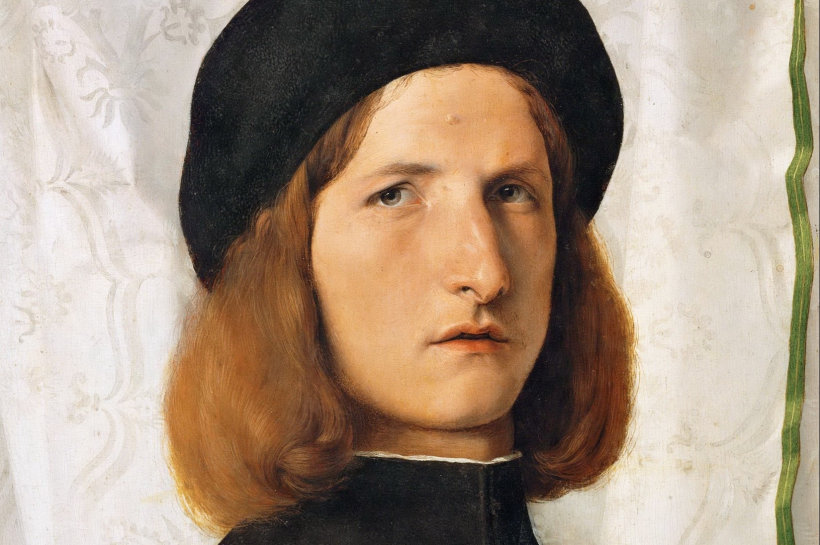
Unknown artist: Defenders of the Faith (1597, Chicago Art Inst.)
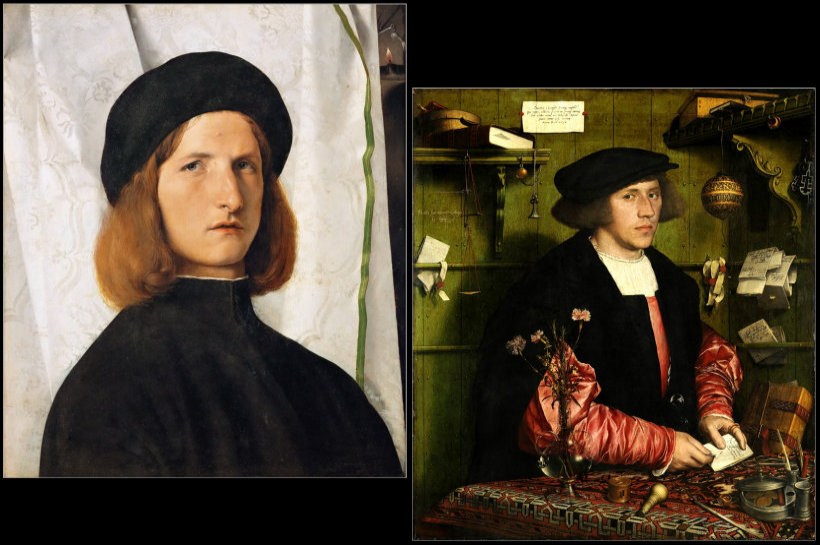
Henry Tamworth Wells: Victoria Receiving News of Her Accession (1887, Royal Collection)
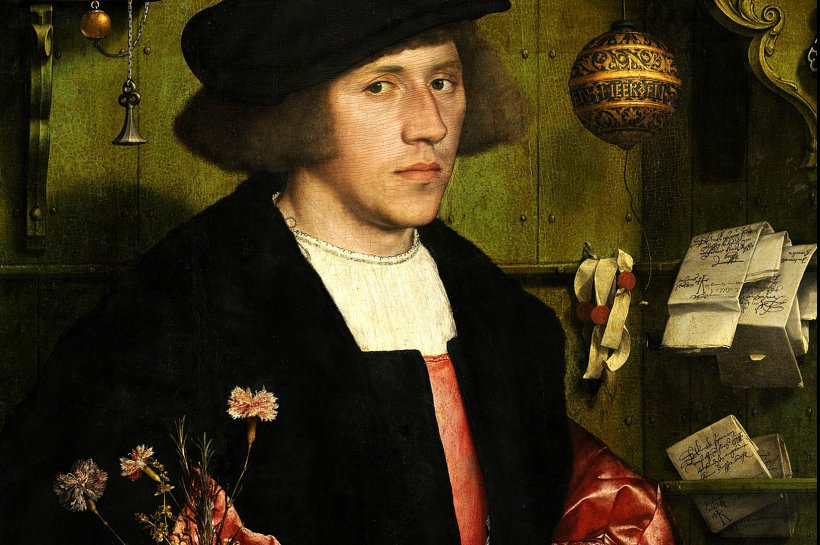
John Wonnacott: The Royal Family: A Centenary Portrait (detail; 2000, London NPG)
The actual class will be devoted to individual portraits, but these three more complex images (click to switch between them)
each include a depiction of the reigning queen. The first shows two of Elizabeth's predecessors, Henry VIII and Edward VI
(Mary is omitted). The second includes the Archbishop of Canterbury and the Lord Chamberlain as well as the young Queen
Victoria. The figures in the third (a detail of a much taller picture) are, from left to right, giving their titles at the
time: Prince William; Queen Elizabeth II; Elizabeth, the Queen Mother; Prince Philip, Duke of Edinburgh; Prince Harry;
and Charles, Prince of Wales. Only the last picture was painted at the time it represents; the other two are much later
reconstructions. Why? What is the purpose of each artist, and what message about Queenship is he intending to convey?
Here are brief bios of the artists, composers, and writers considered in the class, listed in order of birth.
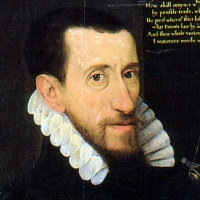 |
George Gower, 1540–96. English painter.
Gower was a portrait painter who became Serjeant Painter to Queen Elizabeth I in 1581. The original Armada Portrait, once attributed to him, is now thought to be by an unknown artist, but there are a number of uncontested paintings of the Queen and figures in her court.
|
 |
William Byrd, 1542–1623. English composer.
One of the greatest of English Renaissance composers, Byrd probably studied under Thomas Tallis. In 1572 he was appointed Gentleman of the Chapel Royal, which furthered his career as a composer of choral music. In 1575, he and Tallis were granted a monopoly on music publication for 21 years. Although he wrote in all genres, Byrd coverted to Catholicism later in life, and composed much Catholic sacred music.
|
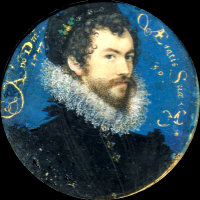 |
Nicholas Hilliard, 1547–1619. British miniaturist.
Hilliard is best known for his numerous portrait miniatures, capturing the personalities and styles of the Elizabethan and Jacobean courts, including portraits of the Queen herself over a 30-year span.
|
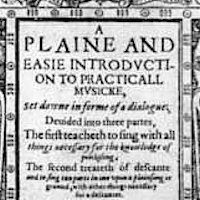 |
Thomas Morley, 1557–1602. English composer.
Organist of St. Paul's Cathedral, and the leading madrigal composer of the Elizabethan era, Morley was a friend of Shakespeare's and set songs from several of his plays, although it is not known if these were used in performance. [This is the title page of one of his publications; no portrait of him could be found.]
|
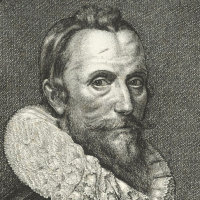 |
Marcus Gheeraerts the Younger, 1561–1636. Flemish painter.
Gheeraerts was brought to England by his father, also a painter, and became one of the most successful portraitists in the Elizabethan and Jacobean courts.
|
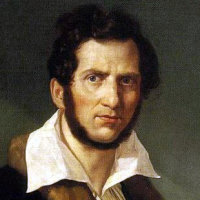 |
Gaetano Donizetti, 1797–1848. Italian composer.
One of the leading composers of historical and romantic operas in the bel canto era, including a trilogy featuring Queen Elizabeth I, plus comedies in both Italian and French, Donizetti nonetheless began his career with a mythological scene, Pygmalion.
|
 |
Franz Xavier Winterhalter, 1805–73. German painter.
Although of peasant stock, he became drawing master to the Margravine of Baden in 1828. Her father supported his further study, and he eventually became the most sought-after court painter in Europe in the mid-19th century.
|
 |
Karoly Brocky, 1807–55. Hungarian painter.
Born in Hungary, Brocky worked in his youth as an itinerant actor before being sent to art schools in Vienna and Paris. Coming to London in 1838, he changed his first name to Charles, and soon found success as a society portraitist.
|
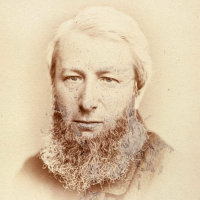 |
Robert Thorburn, 1818–85. English painter.
Until it went out of fashion, Thorburn specialized in miniatures painted on ivory. His subjects included Queen Victoria and other members of the British aristocracy.
|
 |
Heinrich von Angeli, 1840–1925. Austrian painter.
Wikipedia notes that "the success of Angeli at painting society portraits was partly due to his skill in depicting uniforms, pearls, and other jewels." Yet Queen Victoria praised his late portraits of her for their "honesty, total want of flattery, and appreciation of character.”
|
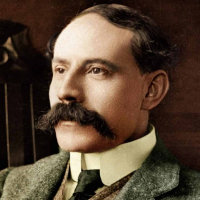 |
Edward Elgar, 1857–1934. English composer.
Elgar was the leading figure in English music during the late Victorian and Edwardian eras. With works such as the Enigma Variations and his concerti for violin and cello, he was one of the first English composers after Purcell to achieve an international reputation.
|
 |
Lytton Strachey, 1880–1932. English writer.
Strachey "was an English writer and critic. A founding member of the Bloomsbury Group and author of Eminent Victorians, he established a new form of biography in which psychological insight and sympathy are combined with irreverence and wit." [Wikipedia]
|
 |
N. C. Wyeth, 1882–1944. American painter.
Newell Convers Wyeth, always known by his initials, was an American artist, creating dramatic illustrations to Treasure Island and over 100 other books. He also produced non-narrative paintings, but always claimed that illustration and painting were two entirely separate forms of art. His son and grandson, Andrew and Jamie Wyeth, achieved similar fame as artists.
|
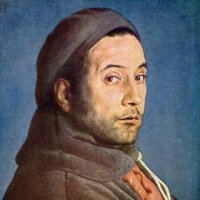 |
Pietro Annigoni, 1910–88. Italian painter.
Completely eschewing the innovations of modern art, Annigoni painted in a realistic style based closely on the art of the early Renaissance. His 1954 portrait of Queen Elizabeth II led to commissions to paint Pope John XXIII, President Kennedy, the Shah of Iran, and many others.
|
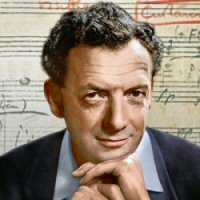 |
Benjamin Britten, 1913–76. English composer.
Arguably the leading opera composer of the mid-20th century, Britten's major operas have included Peter Grimes (1945), Billy Budd (1951), Gloriana (1953), A Midsummer Night's Dream (1960), and Death in Venice (1973), plus many stage works for smaller forces. He was equally active as a composer of instrumental music and text settings, and latterly as a conductor and accompanist.
|
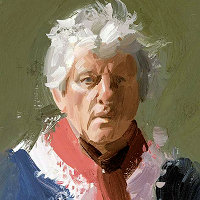 |
Andrew Festing, 1941– . English painter.
Born into a military family, Festing attended a military school and served in the army for a decade. He then worked for a while at Sotheby's before taking up portrait painting full-time in 1981. Many official commissions came his way, including from the Royal Family, leading ultimately to his election as President of the Royal Society of Portrait Painters in 202.
|
 |
Peter Morgan, 1963– . English writer.
Morgan was born in London to refugee parents (from Germany and Poland), but his career as a playwright and screenwriter has been largely devoted to quintessentially British subjects, such as The Queen (2006), The Other Boleyn Girl (2008), The Audience (2013), and The Crown (2016–23).
|



